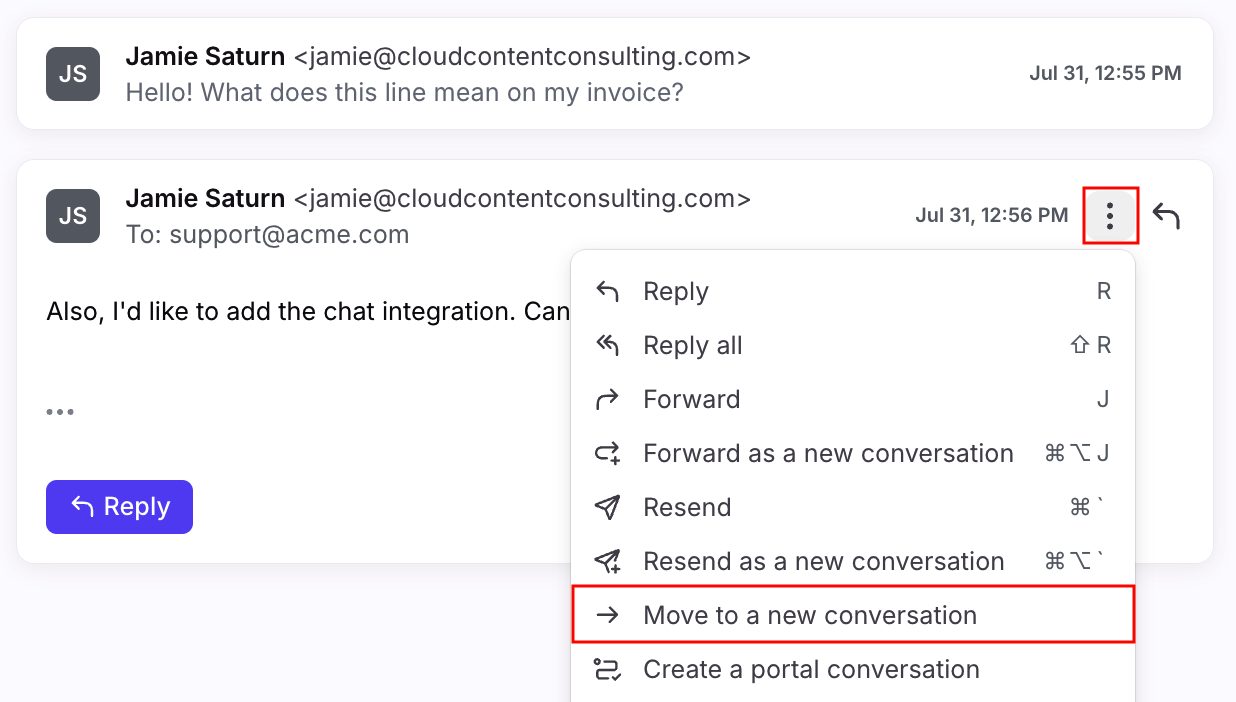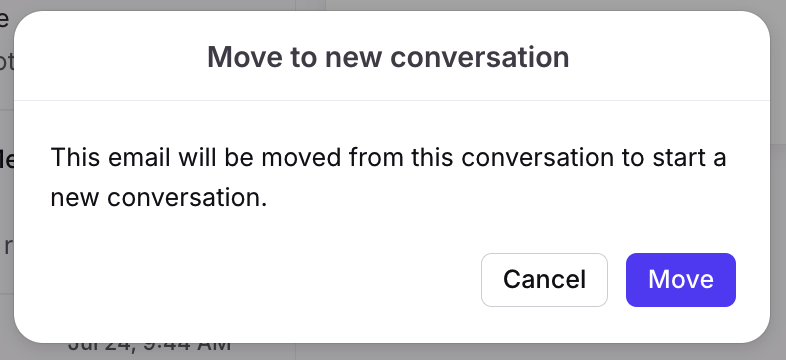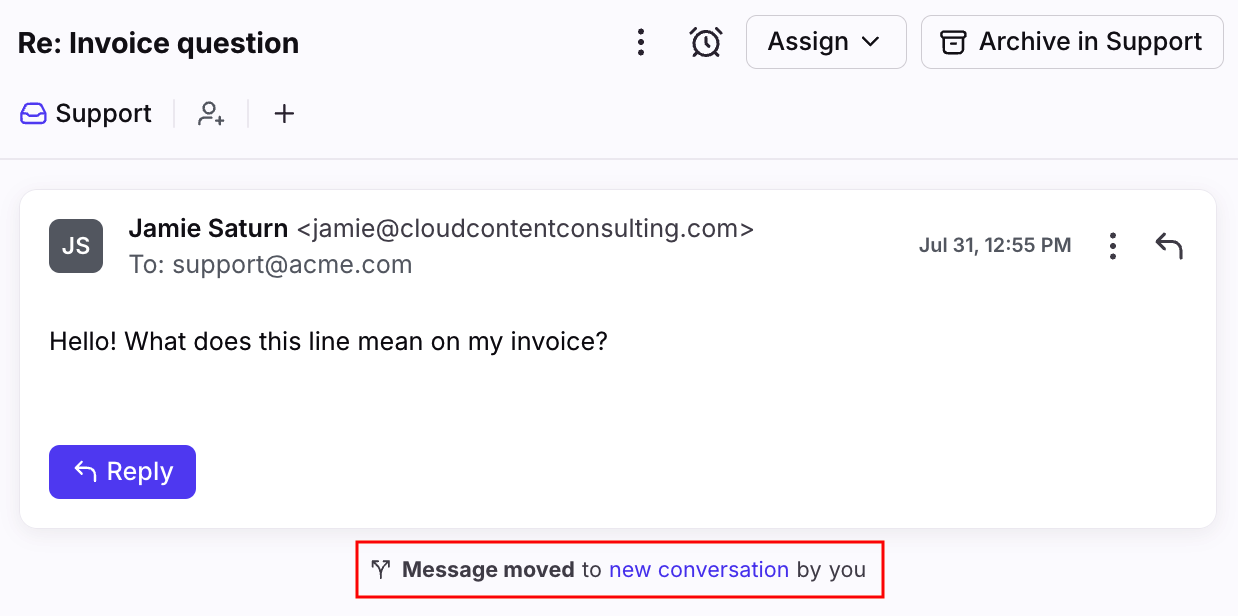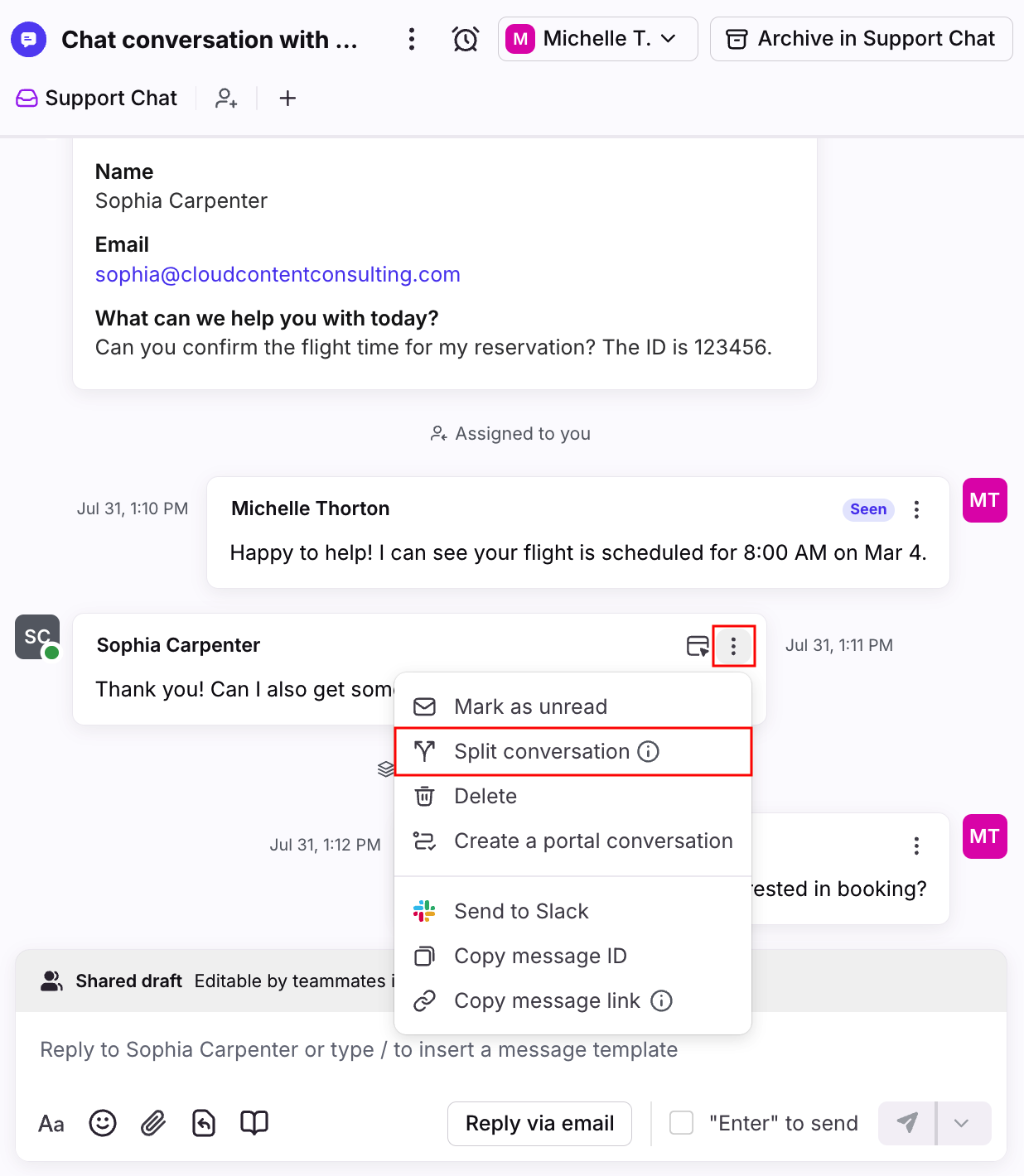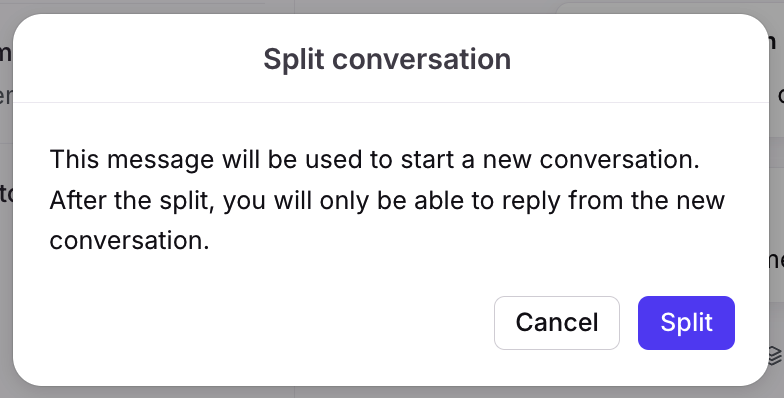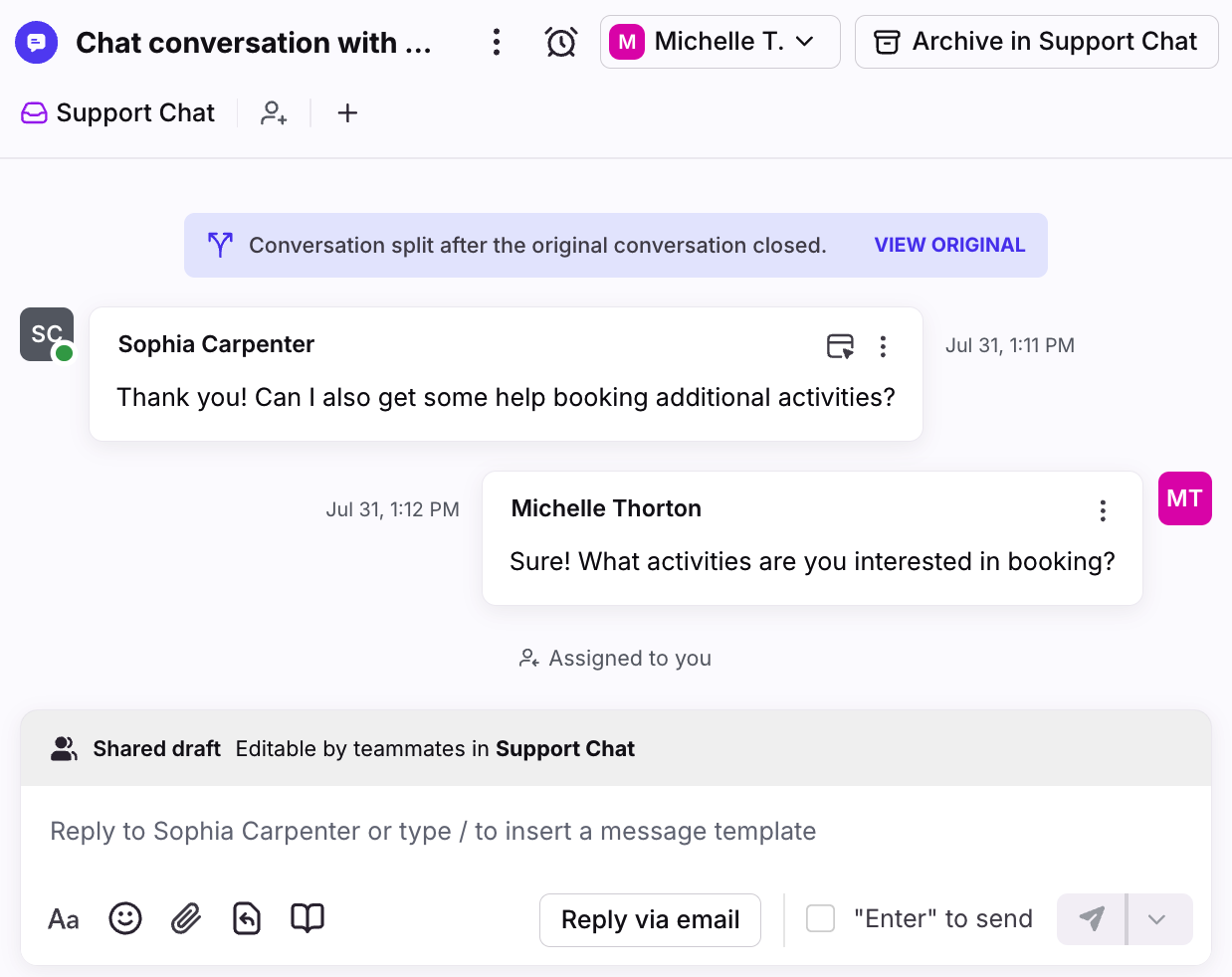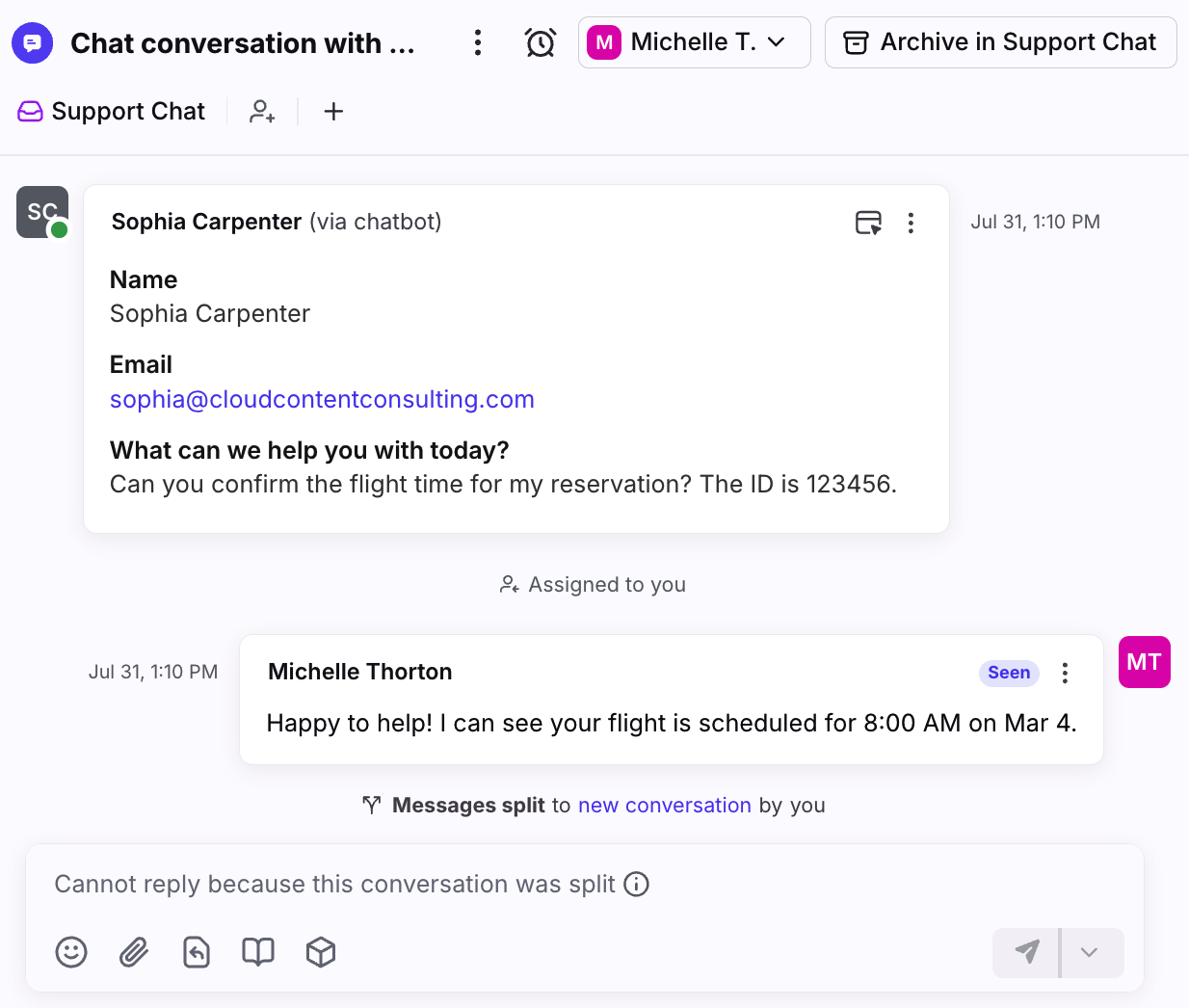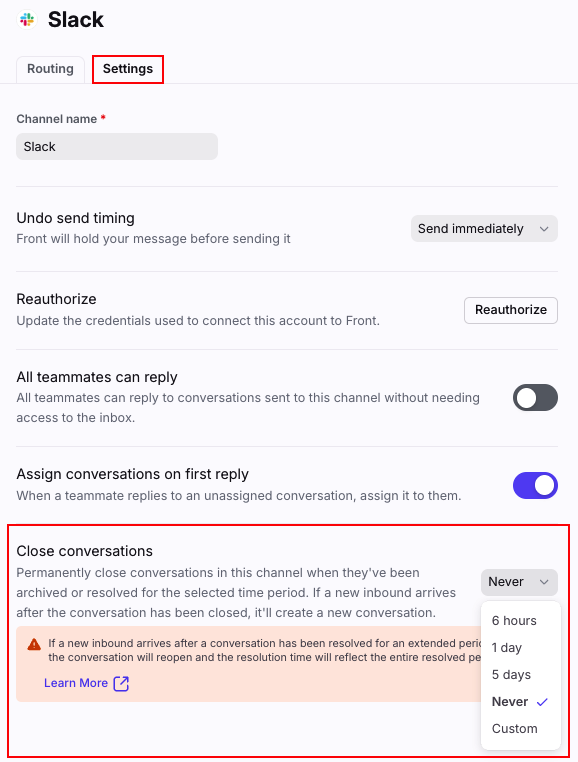How to move messages and split conversations
Overview
Are replies from different customers being threaded together, or is it hard to tell what part of a chat conversation a tag is referring to?
Anyone on your Front team can move an email message into a new conversation or split a non-email conversation, so you can handle different topics separately. Replies will thread in the latest conversation, and each conversation will have its own tags and assignee.
Depending on the channel type, the feature may look different. Follow the instructions for your conversation type below.
Email: Move a message to a new conversation
Use the Move to a new conversation feature to move a message in an email or form to a brand new conversation.
Instructions (email)
Step 1
Open a conversation you want to split, and click on the message you want to use to start the new conversation.
This must be a single message — you can’t select multiple messages and move them as a group. Any messages after the message you select will remain in the original conversation.
Step 2
Click the three-dot menu, then select Move to a new conversation.
Step 3
Click Move to confirm. This action cannot be undone, though you can use our merge feature to combine the threads later.
Step 4
You will land in the new conversation with the single message you selected in Step 1. There will be an activity line in the new conversation linking to the original thread.
Step 5
There will also be an activity line in the original conversation linking to the new conversation.
Step 6
Reply from the new conversation if you would like replies to be threaded there. You can change the assignee, tags, or subject line of the new conversation without impacting the original conversation.
How it works (email)
When you move an email message, it's removed from its original conversation and used to start a new, separate conversation.
Anyone with access to the original conversation can access the new one by a link in the conversation, unless it’s moved to an inbox they don't have access to or their access is revoked.
Both the original and new conversations can be used to reply to the recipient.
Assignments, participants, tags, and comments:
The new conversation will have the same followers and assignee as the old conversation.
If the original conversation was unassigned, the new conversation will be also unassigned.
Tags and comments will remain on the original conversation and will not be moved.
Moving messages is only visible to your Front team, not to the external recipients on the thread. To make it easier for them to keep topics separate, we recommend changing the subject line when you reply to the new conversation to something different from the original.
Automatically move messages
Use the rule action Move message to a new conversation to automatically move messages based on criteria specified in your rule. See this article to learn more.
Non-email: Split a conversation
Without splitting, messages in SMS or chat-like channels will continue in one long thread. This can make tagging very messy, as it’s hard to tell which part of the conversation a tag is referring to.
When a customer starts chatting or texting about a completely new topic, you can split the conversation into a new thread with its own tag. That way, tag filtering and analytics stay clear and easy to understand.
Instructions (non-email)
Step 1
Open a conversation you want to split in a non-email channel. Select the message you want to use to start the new conversation.
Step 2
Click the three-dot menu, then select Split conversation.
Step 3
Click Split in the pop-up to confirm you want to split the conversation.
Step 4
You’ll immediately move to a new conversation starting with your chosen message. If the message was not the last one in the conversation, any subsequent messages will also be moved over.
Going forward, all messages to or from the contact will thread into the new conversation. You can assign or tag the old conversation and new conversation completely independently.
Step 5
You will only be able to reply from the new conversation. Use the link at the bottom of an old conversation to navigate to the latest thread to reply.
How it works (non-email)
Choose the message you want to use to start the new thread. Once you split it, all subsequent replies starting with that message will be moved over from their old conversation into the new one.
There will be activity lines in each conversation that link to each other. Anyone with access to the original conversation will have access to the new split conversation regardless of inbox permissions.
You will not be able to reply to the old thread, and all new inbound messages from the contact will thread on the new conversation.
The new split conversation will be open, even if the old conversation was archived.
Assignments, participants, tags, and comments:
The new conversation will have the same followers and assignee as the old one, and any comments on messages in the new conversation will also be moved.
Tags and activities will not be ported over, but you can update tags in both conversations as needed after the split.
The split will be invisible to the person you are chatting or texting with so your conversation appears continuous to them. Splitting a conversation is just a helpful way to stay organized in Front.
Splitting a conversation multiple times
You can split a conversation multiple times! For example, if you have a conversation with 10 messages, you can first split messages 4-10 into a new thread, then split messages 9-10 into another new thread. You’ll end up with 3 separate threads with your messages 1-3, 4-8, and 9-10.
You must initiate a split with less than 50 subsequent messages. For example, in a thread with 500 messages that you want to split at message 250, you’d need to split out 400-500, 300-399, then 250-299. You can merge these threads afterwards if you want to end up with two conversations for messages 1-249 and 250-500.
We will surface an error in the app if you try to split a conversation that would have more than 50 messages in the new thread.
Automatically split conversations
Front Chat
For Front Chat, use the End and refresh chats automatically and Widget refresh settings to automatically split conversations after a select time period. See this article to learn more.
Other SMS and chat-like channels
For SMS and other chat-like channels, you can use the Close conversations setting to automatically split conversations after a specifying an inactivity period.
Message limits
Conversations that reach their message limits will automatically split off into new conversation threads. See this article for more information.
FAQ
Can I split conversations in custom channels?
No. Custom channels do not support splitting at this time.

